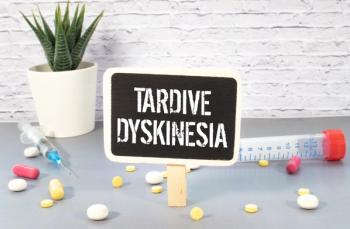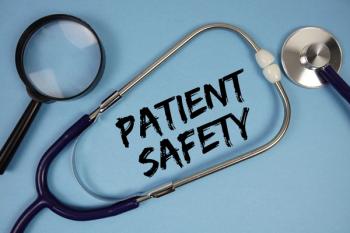
My time as a kiwi apothecary
The author tries his hand at practicing pharmacy in the land down under. He is enjoying his new adventure, despite facing some challenges.
An introduction of sorts
Greetings from the other side of the world, Drug Topics readers!
In the early part of 2010 I decided to try my hand at practicing pharmacy in a foreign land. After researching English-speaking countries that had the highest demand for pharmacists (as well as the most straight-forward process to gaining licensure), I settled upon New Zealand.
After completing a myriad of applications, physical examinations, criminal background checks, interviews, and examinations, I was able to gain a working visa and emigrate from the United States to New Zealand. Now nearly 2 years after beginning the process, 2 months of supervised practice, a law and ethics interview, and a 25-page written assignment that amounted to a crash course in New Zealand pharmacy practice theory, I can finally lay claim to being a qualified pharmacist in Aotearoa.
I am originally from western Pennsylvania, and as such, have a decidedly non-kiwi accent. While I am certainly not the only American-born person living in New Zealand, it is a bit of a conversation piece when meeting people for the first time. Sometimes people will ask if I am Canadian (although, I believe this is a polite default when they are unsure if an accent is American or Canadian). Once it is established that I am indeed American the conversation inevitably leads to a question I have been answering several times a week for almost 2 years: “What makes you want to work in New Zealand?”
Having spent my entire (albeit brief) pharmacy career working in the same community setting in Pittsburgh, I felt it was time for a change. While I had always been treated very well and enjoyed working for my previous employer, personally and professionally it felt as though I was missing something. I wanted to see if I was up to the task of learning a different system of healthcare, the challenge of working in a place where I didn’t personally know another person, and perhaps, most importantly, I wanted an adventure.
I began searching for a job in New Zealand in April 2011, and eventually found an employer willing to work with me while I performed 420 hours of supervised practice. With all of the paperwork settled and a job secured, I was all set to leave the United States the first week of September 2011.
Due to some last-minute schedule changes, traveling from Pittsburgh to my ultimate destination of Palmerston North, NZ, required 45 arduous hours, 5 separate flights, and a trip over the international dateline. Arriving at my hotel and having a bed to sleep in after nearly 2 days of travel was absolute bliss.
The next few days involved getting acclimated and taking care of the basics of settling into a new town, as well as adjusting to a 16-hour difference in time zone. Previous to leaving the United States, I had arranged for a place to stay, so I at least had a base of operations upon arrival. I did have to set up a New Zealand bank account, register for a tax ID number, purchase a bicycle for transportation, and acquire a new mobile phone carrier. These are all fairly mundane chores, but necessary when starting a new life.
First impressions
When I first began planning this endeavor, I thought to myself that it couldn’t possibly be that difficult to move to another English-speaking country and begin practicing pharmacy. Even with the obvious differences in medication brand names, I assumed that I would pick everything up within 2 or 3 weeks. After all, I have been a licensed pharmacist in the state of Pennsylvania for more than 5 years. I passed an equivalency examination to practice in Australia or New Zealand. Clearly I know my stuff, how difficult can this possibly be?
Well, it turns out its actually quite a bit more difficult than I had originally thought. The biggest stumbling block for me was probably the computer system. The unfamiliar layout and functions made it a challenge to do something as basic as print a duplicate label in the beginning. As most who read this are already aware, if you don’t know your pharmacy operating system like the back of your hand, you are a handicap to the rest of the staff. Until I became comfortable enough to run prescriptions and evaluate interactions within the system, I felt like an intimidated intern working their first shift on a Monday afternoon in January. Eventually I picked up the system and became competent enough to process prescriptions at an acceptable rate.
New Zealand accents took a little for me to become accustomed to, and likewise I find myself articulating words differently than I would in the United States to accommodate patients at times. The best example I have to date is a 50-something gentleman who was inquiring about an over-the-counter nasal spray. I thought he was asking me if it was the “beta” one, to which I replied “No sir, that is a steroid-based spray.” He looked a little dismayed and repeated the question. It was at this point that I realized he was saying “better,” not “beta.” I would like to say this was an isolated incident, but, alas, it is not.
Another challenge I faced was (of course) the differences in medications. Even your most basic U.S. medications are different here. There is no “acetaminophen” in New Zealand, but there is “paracetamol” or “panadol.” “Benadryl” products contain no diphenhydramine. Cephalexin is almost never prescribed, but flucloxacillin is dispensed like candy. Low-dose aspirin is either 75 mg or 100 mg. Lastly, Vicodin (or hydrocodone with acetaminophen/paracetamol) simply does not exist in New Zealand. In addition, most brand names for medications in New Zealand differ from their U.S. counterparts.
Along the lines of differences in medications, an interesting aspect of pharmacy practice involves what is available as a brand name or generic drug here. There is currently a single-source brand name product for clonidine in New Zealand, while at the same time there are generic products available for clopidogrel, olanzapine, and sildenafil. Determination for what is available for dispensing and what is subsidized for payment by the government is determined by PHARMAC. It is a bit strange working in a community environment that is governed by a specific formulary, rather than the standard free-for-all of medication availability we have in the U.S. retail sector.
Closing thoughts
As with any new job, getting through the first few weeks and picking up things in a timely fashion is critical. Over the first month of supervised practice, I managed to not screw up too badly or get fired, so I must be doing ok.
My overall impression thus far is that the American model of community pharmacy provides a greater variety of treatment options, though obviously at an increased cost. The New Zealand model appears to be more streamlined, which is likely much easier to accomplish in a country of less than 5 million people. I’m excited to further immerse myself in practice here over the next few months and learn more about the systems in place.
Until next time, readers…
Joel Claycomb, PharmD, is a community pharmacist in Manawatu, New Zealand. He can be reached at jcclaycomb@gmail.com.
Newsletter
Pharmacy practice is always changing. Stay ahead of the curve with the Drug Topics newsletter and get the latest drug information, industry trends, and patient care tips.












































































































































